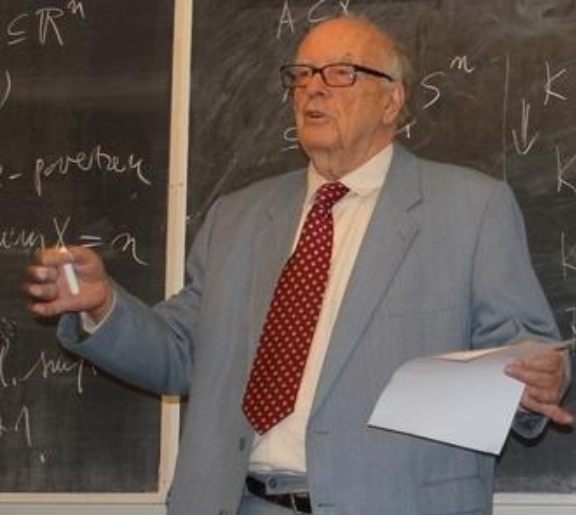Department of Mathematics colloquium - Sibe Mardešić presents a sequence of lectures given by leading experts in the fields of theoretical and applied mathematics. The lectures take place at the Department of Mathematics, Faculty of Science, Bijenička cesta 30, Zagreb.
Lecture announcement

About the lecturer: Professor Bingham earned a First-Class Honours degree from Trinity College, Oxford, and a Ph.D. from Churchill College, Cambridge, in 1969, where he was a student of David George Kendall. Throughout his distinguished career, he has held professorships at institutions including Royal Holloway, Bedford New College, and Birkbeck College at the University of London, as well as Brunel University, the University of Sheffield, Imperial College London, and the London School of Economics. In these roles, he has made profound contributions to probability, analysis, and statistics. He is the co-author of several seminal books, such as the field-defining treatise Regular Variation, the highly influential Risk-Neutral Valuation on financial derivatives, and the rigorous statistical text Regression. Beyond his research, he has given decades of service to the community, serving as an editor for several journals on probability and analysis and supervising several Ph.D. students. Currently an Emeritus Professor at Imperial College London, Professor Bingham continues his active presence in research.
Lecture abstract: Baire category stems from René Baire in 1899; Lebesgue measure stems from Henri Lebesgue in 1903. The first is topological, the second is measure-theoretic. The similarities between the two were the theme of the lovely book by John C. Oxtoby, Measure and category: A survey of the analogies between topological and measure spaces (Springer, Grad. Texts in Math. 2, 1971, 1980); see especially Ch. 19, The Sierpiński-Erdős duality theorem. To these authors, it was measure that was primary, witness the order in their title. The opposite view is taken in the recent book, N. H. Bingham and Adam J. Ostaszewski, Category and measure: Infinite combinatorics, topology and groups, Cambridge Tracts in Math. 233, Cambridge University Press, 2025. A key role is played by the density topology (a fine topology — a refinement of the usual Euclidean topology). We develop the qualitative measure properties here, and their Baire analogues, by working bitopologically — switching between the Euclidean and the density topologies. Probing the contrasts leads one into foundational questions in set theory and mathematical logic.
